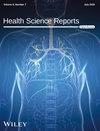A Comprehensive Look at Complementary and Alternative Medicine (CAM) in Saudi Arabia: A Meta-Analysis Study
Abstract
Background and Aims
Complementary and Alternative Medicine (CAM) refers to a diverse array of healthcare practices that lie outside conventional Western medicine, including herbal remedies, spiritual healing, and traditional therapies. CAM use has become increasingly prevalent worldwide, driven by cultural, religious, and socioeconomic factors, including in Saudi Arabia. This systematic review and meta-analysis aimed to estimate the prevalence of CAM use in Saudi Arabia and examine the patterns of its utilization across various populations.
Methods
A systematic literature review was conducted using the PRISMA framework to identify studies investigating the prevalence and patterns of CAM use among diverse populations in Saudi Arabia. Databases searched included Cochrane, Clinicaltrials.gov, CINAHL, Web of Science, and PubMed.
Results
Seven cross-sectional studies, with a total of 4112 participants were included. The studies encompassed a wide range of populations, from adolescents to adults with chronic illnesses. The pooled prevalence of CAM use was calculated to be 0.515 (95% CI [0.373–0.657]) using a random-effects model, showing that 51.5% of the Saudi population engages in CAM practices. Significant heterogeneity was observed across the included studies, likely due to differences in population demographics, CAM definitions, and study methodologies.
Conclusion
The findings emphasize the cultural and religious impact on CAM use and its significance in healthcare delivery. Future research should focus on standardizing CAM definitions, exploring the efficacy of popular therapies, and integrating CAM into conventional healthcare to provide holistic and culturally sensitive care.
Review Registration ID
PROSPERO CRD42024608257.


 求助内容:
求助内容: 应助结果提醒方式:
应助结果提醒方式:


